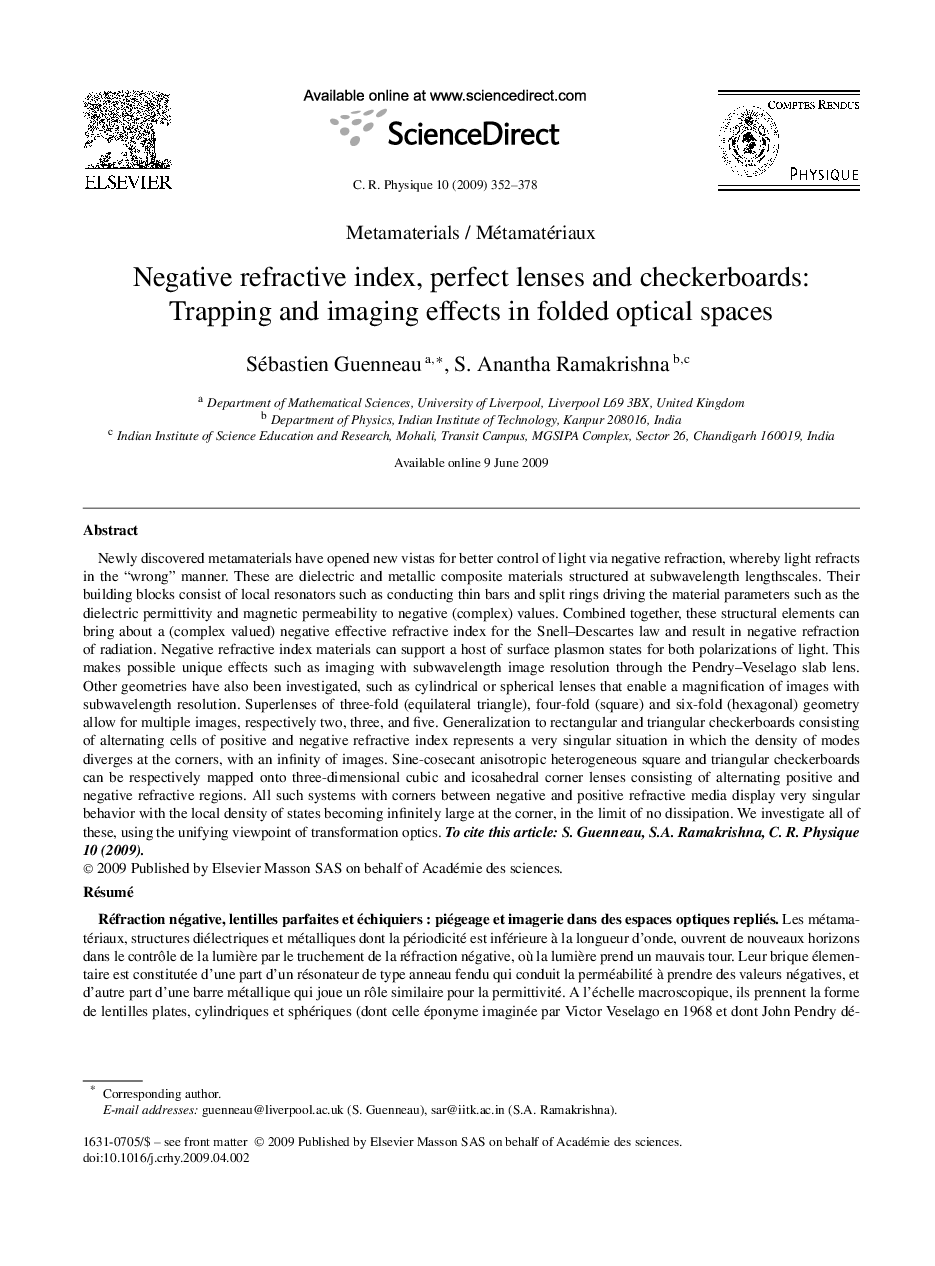| کد مقاله | کد نشریه | سال انتشار | مقاله انگلیسی | نسخه تمام متن |
|---|---|---|---|---|
| 1858720 | 1037055 | 2009 | 27 صفحه PDF | دانلود رایگان |

Newly discovered metamaterials have opened new vistas for better control of light via negative refraction, whereby light refracts in the “wrong” manner. These are dielectric and metallic composite materials structured at subwavelength lengthscales. Their building blocks consist of local resonators such as conducting thin bars and split rings driving the material parameters such as the dielectric permittivity and magnetic permeability to negative (complex) values. Combined together, these structural elements can bring about a (complex valued) negative effective refractive index for the Snell–Descartes law and result in negative refraction of radiation. Negative refractive index materials can support a host of surface plasmon states for both polarizations of light. This makes possible unique effects such as imaging with subwavelength image resolution through the Pendry–Veselago slab lens. Other geometries have also been investigated, such as cylindrical or spherical lenses that enable a magnification of images with subwavelength resolution. Superlenses of three-fold (equilateral triangle), four-fold (square) and six-fold (hexagonal) geometry allow for multiple images, respectively two, three, and five. Generalization to rectangular and triangular checkerboards consisting of alternating cells of positive and negative refractive index represents a very singular situation in which the density of modes diverges at the corners, with an infinity of images. Sine-cosecant anisotropic heterogeneous square and triangular checkerboards can be respectively mapped onto three-dimensional cubic and icosahedral corner lenses consisting of alternating positive and negative refractive regions. All such systems with corners between negative and positive refractive media display very singular behavior with the local density of states becoming infinitely large at the corner, in the limit of no dissipation. We investigate all of these, using the unifying viewpoint of transformation optics. To cite this article: S. Guenneau, S.A. Ramakrishna, C. R. Physique 10 (2009).
RésuméLes métamatériaux, structures diélectriques et métalliques dont la périodicité est inférieure à la longueur d'onde, ouvrent de nouveaux horizons dans le contrôle de la lumière par le truchement de la réfraction négative, où la lumière prend un mauvais tour. Leur brique élementaire est constitutée d'une part d'un résonateur de type anneau fendu qui conduit la perméabilité à prendre des valeurs négatives, et d'autre part d'une barre métallique qui joue un rôle similaire pour la permittivité. A l'échelle macroscopique, ils prennent la forme de lentilles plates, cylindriques et sphériques (dont celle éponyme imaginée par Victor Veselago en 1968 et dont John Pendry démontre qu'elle est parfaite en l'an 2000), ou d'échiquiers et de solides platoniques qui piègent la lumière en leur sein. Pour citer cet article : S. Guenneau, S.A. Ramakrishna, C. R. Physique 10 (2009).
Journal: Comptes Rendus Physique - Volume 10, Issue 5, June 2009, Pages 352-378